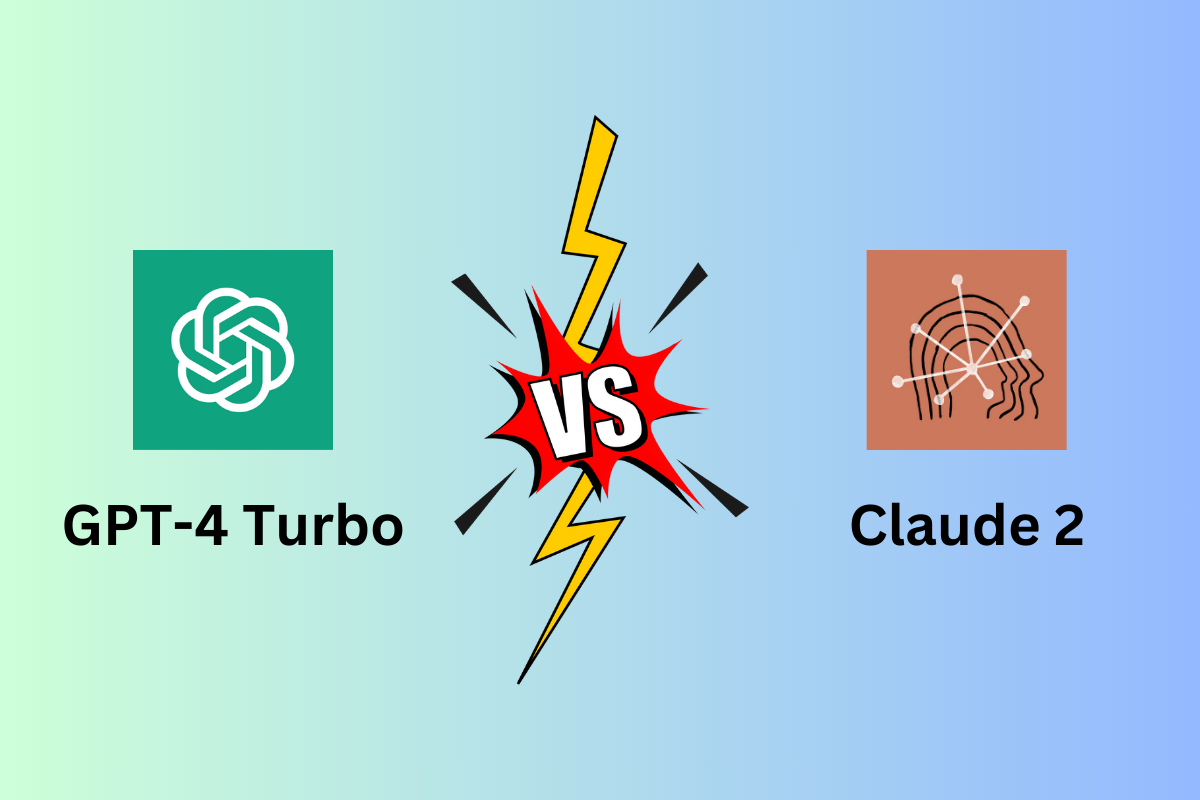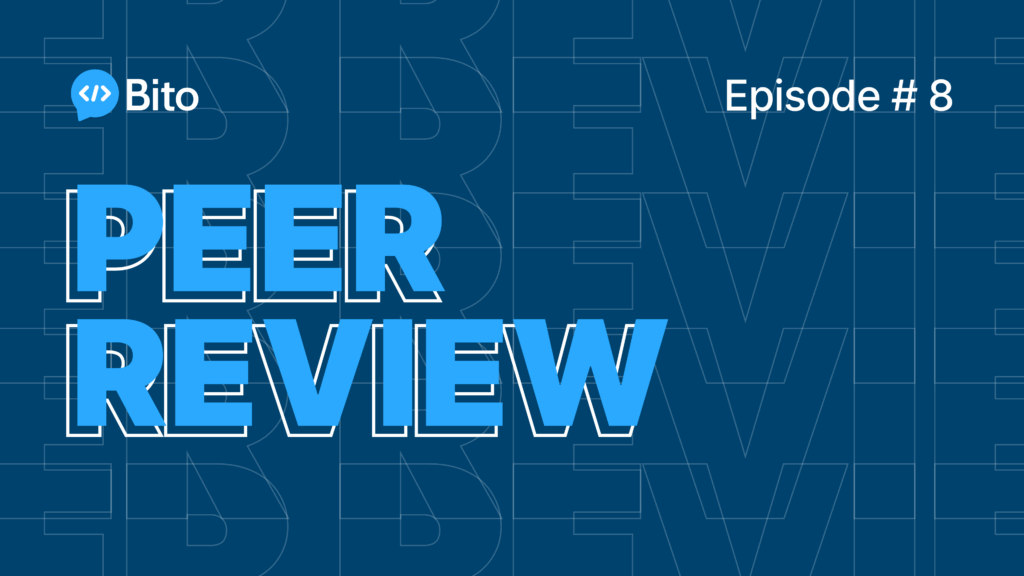GPT-4 Turbo with its huge 128K context window size has become a hot topic in the AI community. Many people who are already using Claude 2 (because of its longer context window of 100K tokens) are wondering “Is GPT-4 Turbo better than Claude 2?”
To address this curiosity, we’ve conducted an in-depth comparison of GPT-4 Turbo vs Claude 2 to find out which AI model is more suitable for your custom AI apps.
At a Glance
| GPT-4 Turbo | Claude 2 | |
|---|---|---|
| Context Window Size | 128K tokens | 100K tokens |
| Supports Multimodal Inputs? | GPT-4 Turbo can process images and respond to multimodal prompts combining text, images, audio and more. | No. It can only process text. |
| Pricing | gpt-4-1106-preview → input: $0.01 / 1K tokens → output: $0.03 / 1K tokens gpt-4-1106-vision-preview → input: $0.01 / 1K tokens → output: $0.03 / 1K tokens | Prompt: $11.02/million tokens Completion: $32.68/million tokens |
| Knowledge Cutoff | April 2023 | early 2023 |
| Recall Performance Degradation | Above 82K tokens | Above 70K tokens |
| Fact Position and Recall Correlation | Low when fact is between 7%-50% document depth. Meaning that GPT-4 Turbo has better recall at the very beginning and 2nd half of the document | Good recall capability throughout the document |
| Fact Recall at Beginning of Document | Recalled regardless of context length | Recalled regardless of context length |
| Recall Guarantees | No guarantees for fact retrieval | No guarantees for fact retrieval |
| Accuracy | GPT-4 performs better <27K tokens. It means less context equals more accuracy | Claude-2 performs better than GPT-4 Turbo on longer context (i.e. >27K tokens) |
| RAG Performance at High Context Lengths | Too low for RAG, but works for lossy summarization | Significantly better than GPT-4 Turbo |
| Long Response Synthesis | Decent with “create and refine” at beginning or end of document; fails in the middle | Doesn’t do well, rate-limit errors for tree summarize |
| Tree-Summarization / Map-Reduce Style Strategies | Doesn’t do well | Doesn’t do well |
| Large-Scale Summarization/Analysis | Issues with dropping context, may require prompt engineering | Issues with dropping context, may require prompt engineering |
Example Code for Evaluation
- lou-eval: This code allows us to track the progress of LLM context utilization.
- Pressure Testing GPT-4-128K: A simple ‘needle in a haystack’ analysis to test in-context retrieval ability of GPT-4-128K context. Basically, this code helps us in simple retrieval from LLM models at various context lengths to measure accuracy.
- Stress-Testing Long Context LLMs with a Recall Task: This code help us find out how well do long-context LLMs (gpt-4-turbo, claude-2) recall specifics in BIG documents? (>= 250k tokens). So, it’s like stress testing GPT-4 Turbo and Claude 2 on even bigger documents that overflow the context window, without retrieval.
Context Window and Capabilities
GPT-4 Turbo stands out with its impressive 128k tokens context window, significantly larger than most of its predecessors. This extended context window allows for more complex and nuanced conversations, as the model can refer to and incorporate a larger amount of information from previous interactions. Moreover, GPT-4 Turbo’s ability to process multimodal inputs is a groundbreaking feature. It can interpret and respond to a combination of text, images, and other formats, making it exceptionally versatile in various applications, from creative arts to complex problem-solving scenarios.
On the other hand, Claude 2, with a 100k tokens context window, focuses primarily on text-based processing. While slightly smaller in comparison, this window is still substantial, allowing Claude 2 to handle extended conversations and complex inquiries efficiently. Although it lacks the multimodal capabilities of GPT-4 Turbo, Claude 2 excels in its text-based processing, making it a robust tool for applications where text is the primary medium of communication.
Pricing Models
The pricing models of both GPT-4 Turbo and Claude 2 reflect their intended use cases and capabilities. GPT-4 Turbo offers a tiered pricing structure, with the gpt-4-1106-preview and gpt-4-1106-vision-preview both priced at $0.01 per 1K tokens for input and $0.03 per 1K tokens for output. This model makes it accessible for a wide range of applications, from academic research to commercial use.
Claude 2 adopts a different pricing strategy, with $11.02 per million tokens for prompts and $32.68 per million tokens for completions. This pricing reflects its specialized capabilities in text processing and is aligned with its target market, which includes large-scale enterprise solutions and sophisticated language processing tasks.
Knowledge Cutoff
An essential aspect of these models is their knowledge cutoff – the point at which the model’s training data ends. GPT-4 Turbo’s knowledge extends up to April 2023, providing it with a more recent understanding of world events and information. In contrast, Claude 2’s knowledge cutoff is in early 2023. This difference, albeit slight, can impact the models’ relevance and accuracy in responding to current events and recent developments.
Performance and Limitations
Our findings indicate that GPT-4 Turbo’s recall performance starts to degrade above 82K tokens. Interestingly, the model’s ability to recall facts is influenced by their position in the document. Facts placed at the beginning or in the second half are more likely to be recalled accurately. This positional bias suggests a strategy for users to place critical information in these areas to enhance recall.
Claude 2, while efficient in many respects, shows limitations in long response synthesis. The model encountered rate-limit errors during tasks requiring extensive summarization, indicating a potential area for improvement in handling large-scale data processing.
Both models face challenges with complex summarization techniques like tree-summarization and map-reduce strategies. These findings highlight the ongoing development required in large-scale summarization and analysis using long-context language models. The necessity for prompt engineering to achieve desired outcomes is evident, underscoring the need for skillful manipulation of these tools for optimal performance.
Enhanced Performance of GPT-4 Turbo in Coding Tasks
One of the noteworthy advancements in GPT-4 Turbo, specifically in the gpt-4-1106-preview model, is its enhanced speed and accuracy in coding-related tasks. This latest iteration of GPT-4 Turbo exhibits a remarkable 2 to 2.5 times speed increase compared to the June GPT-4 model. This improvement in processing speed is not just a technical enhancement but also translates into more efficient and rapid problem-solving capabilities, particularly beneficial in coding and programming contexts.
Furthermore, the gpt-4-1106-preview model demonstrates a significant leap in its ability to produce correct code on the initial attempt. It successfully solves 53% of coding exercises correctly without requiring any feedback or error correction from a test suite. This is a substantial improvement over previous models, which only achieved a 46-47% success rate on first tries. This higher accuracy in initial code generation indicates a deeper understanding of programming languages and logic, making GPT-4 Turbo a more reliable tool for developers and programmers.
Interestingly, when it comes to refining code based on test suite error output, the new model maintains a consistent performance level, achieving around 65% accuracy. This is comparable to the 63-64% accuracy range observed in earlier models after they have had a chance to correct bugs based on test suite feedback. This consistency in performance, even after incorporating feedback, underscores the model’s robustness in iterative coding processes.
The enhanced speed and accuracy of GPT-4 Turbo in coding exercises are not just quantitative improvements but also signify a qualitative leap in AI’s ability to interact with and understand the nuances of programming languages. This development opens new doors for AI-assisted coding, potentially leading to more efficient and accurate code generation, debugging, and software development processes.
Use Cases and Applications
GPT-4 Turbo, with its multimodal capabilities, is well-suited for creative applications like image and text generation, interactive chatbots, and complex problem-solving tasks that require the integration of various data formats. Its extended context window makes it ideal for applications requiring in-depth conversation history and context.
Claude 2, with its focus on text processing, is an excellent tool for content creation, customer service automation, and large-scale data analysis where textual information is paramount. Its pricing model and capabilities make it a strong candidate for enterprises and applications where high-quality text processing is critical.
Future Prospects and Development
The future of language models like GPT-4 Turbo and Claude 2 lies in continuous improvement and adaptation. Enhancements in context management, recall accuracy, and processing capabilities are expected, driven by ongoing research and user feedback. The evolution of these models will likely include better handling of longer contexts, more nuanced understanding of user intent, and increased versatility in various applications.
Conclusion
In conclusion, both GPT-4 Turbo and Claude 2 are formidable players in the realm of advanced language models, each with its strengths and areas for improvement. The choice between them depends on the specific requirements of the task at hand, whether it’s the need for multimodal processing, extensive context window, or specialized text-based operations.
As these models continue to evolve, they promise to unlock new possibilities in AI and machine learning, offering increasingly sophisticated tools for understanding and generating human language.






